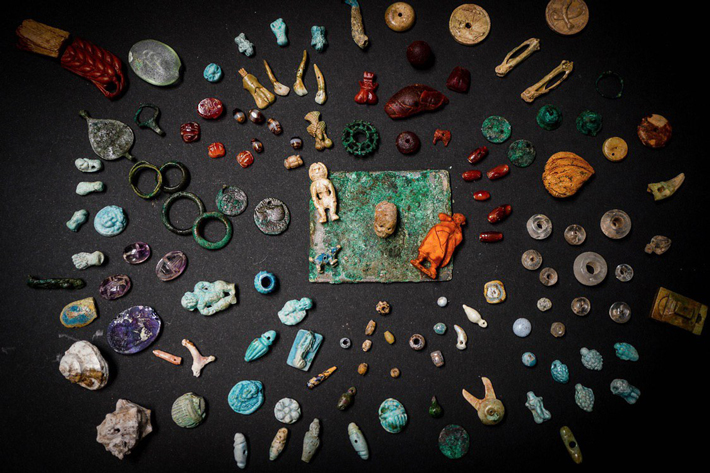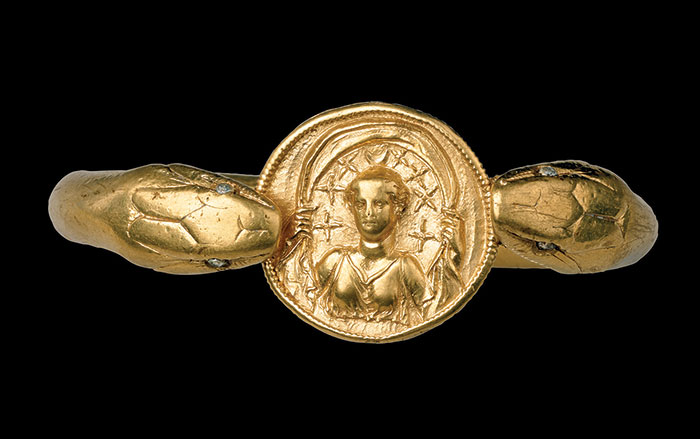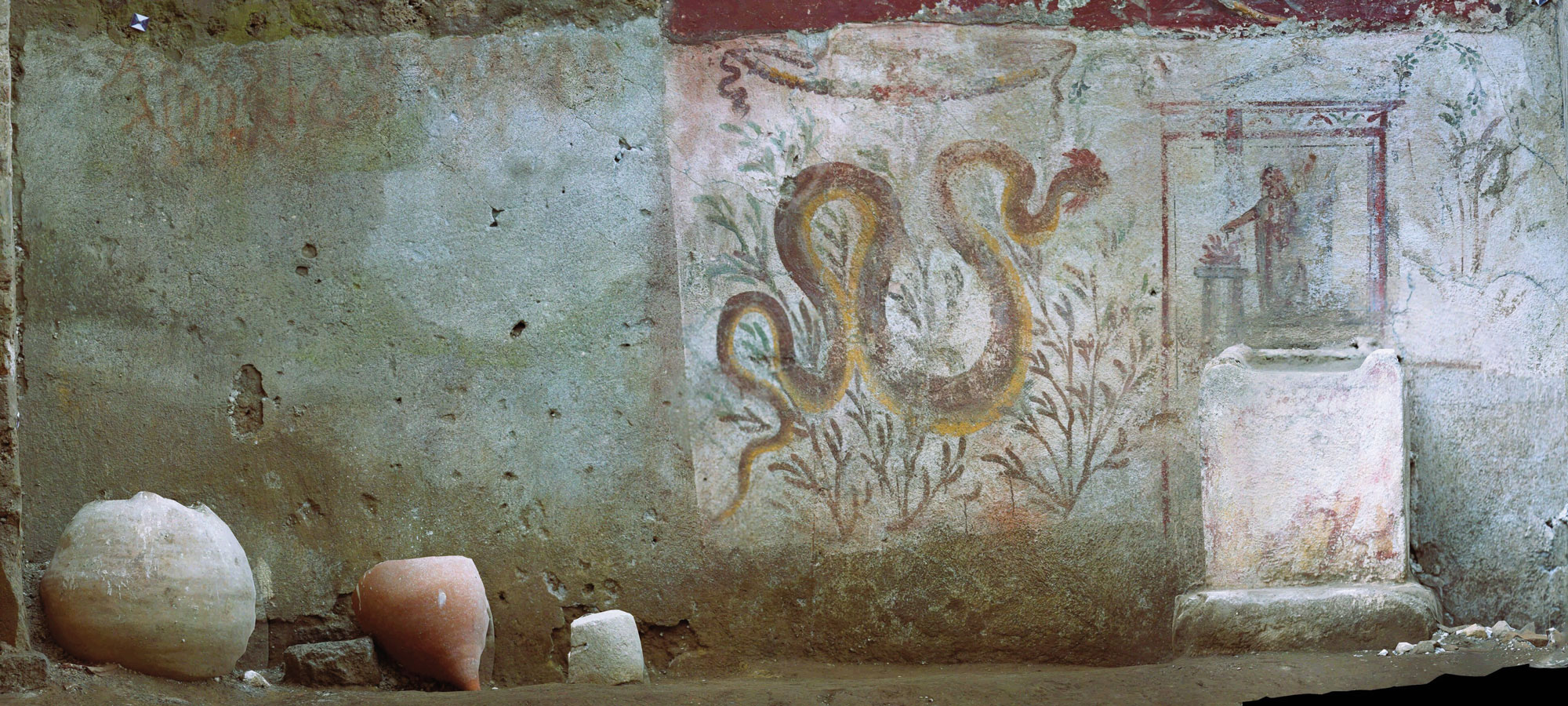
NAPLES, ITALY—BBC News reports that a 2,000-year-old collection of possible ritual objects thought to have served as women’s “good luck charms” has been discovered under a layer of volcanic material in the high-status dwelling known as Pompeii’s House of the Garden. The artifacts include scarabs, crystals, amethysts, amber, carnelian, mirrors, and glass beads engraved with images of the Roman god Dionysus and a dancing satyr. The small treasures are thought to have been kept in a wooden box whose bronze hinges have survived. Indentations in the ash layer suggest the box had been placed next to a crate or piece of furniture in the corner of what may have been a storage room. Massimo Osanna, director of the Archaeological Park of Pompeii, said the jewels and small objects may have belonged to a servant or slave, rather than the lady of the house, since none of them were made of gold, a material favored by Pompeii’s elite. For more on the new excavations in the ancient city, go to “Digging Deeper into Pompeii’s Past.”










